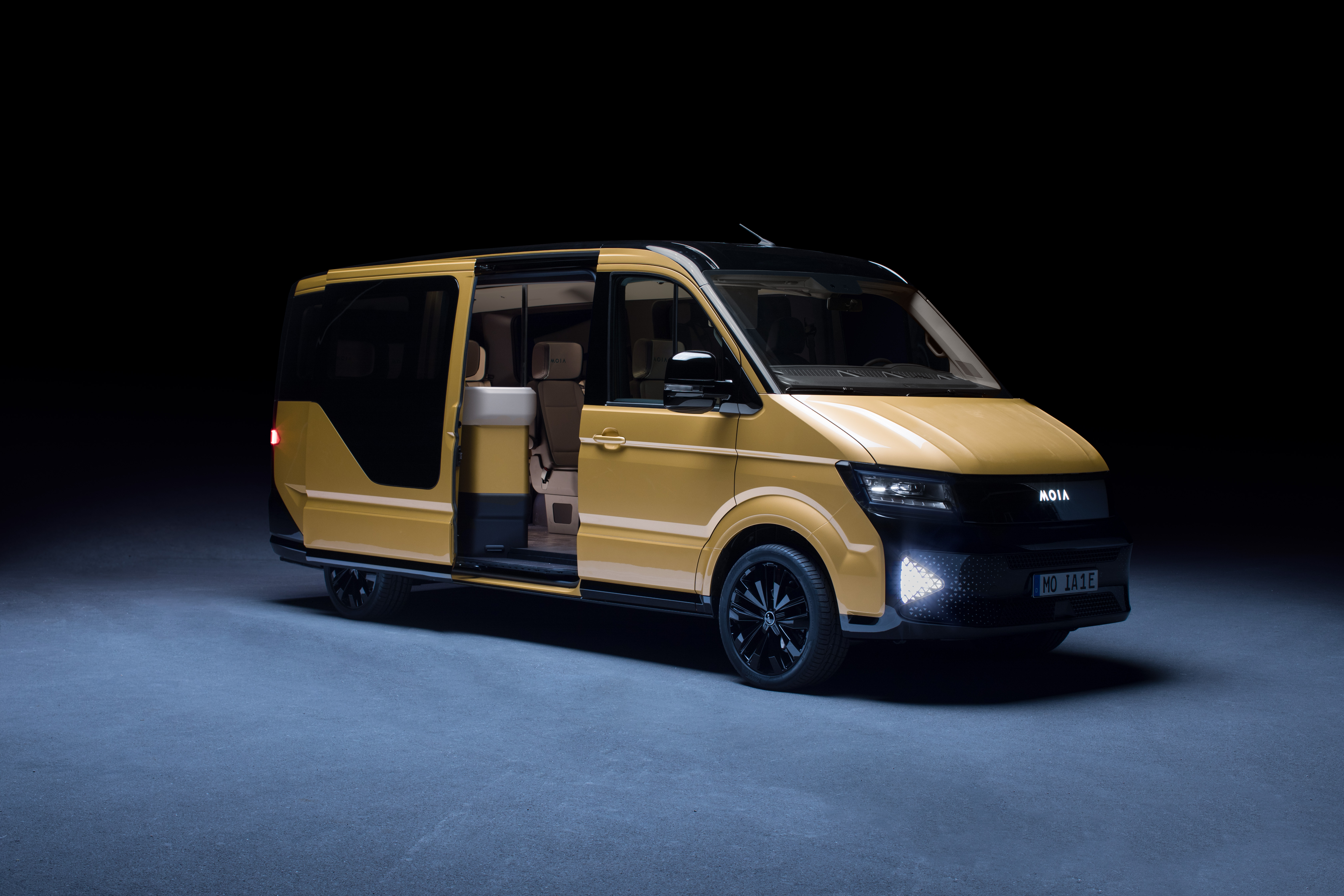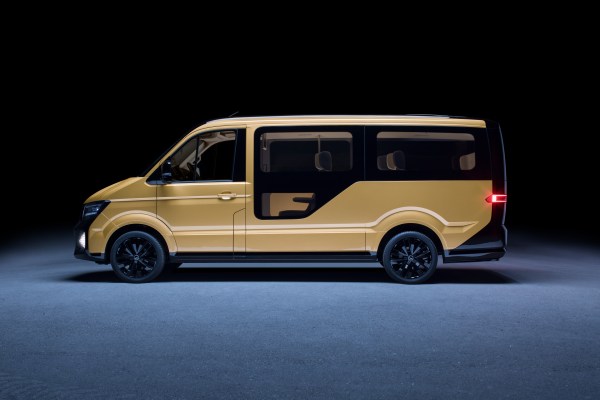Some carmakers are talking a lot about the potential of shared mobility services and alternatives to car ownership, but Volkswagen’s MOIA is actually going a step further, with a brand new vehicle it’s unveiling today that’s focused entirely on this new market. The all-electric car, which made its debut at TechCrunch Disrupt Berlin today, is designed to provide maximally usable space for up to six passengers, and will make its official debut in service on roads beginning in Hamburg in 2018, where the company expects to put about 200 cars on the road at first.
The concept is centered around ride sharing, with a design tailor-made for users who will seek to pool their vehicle use. It’s only taken MOIA one year from its official debut last year at TechCrunch Disrupt London to bring this concept to fruition, with a vehicle introduced today that’s not only built to scale but that can also actually drive and is aiming to enter into service as early as next year.
This six-seater vehicle goes above and beyond the typical current electric vehicle, with individual seats in place of bench, and with USB ports and dimmable interior lighting for individual passenger comfort and convenience. There’s built-in onboard Wi-fi, and luggage storage provided not in the rear as you might expect, but up front next to the driver to provide more leg and passenger room in the rear compartment.
[gallery ids="1573850,1573851,1573852,1573853,1573854,1573855,1573856,1573857,1573858,1573859,1573860,1573861,1573862,1573863,1573864,1573865,1573866,1573867,1573868,1573869"]
Range on the vehicle is around 186 miles based on the global harmonized WLTP testing standards, and it can also recoup up to 80 percent of is charge in just 30 minutes. The entire design and build of the car took only 10 months to get to this point, where a functional concept is present and in attendance at TechCrunch Disrupt. That’ thanks to agile design processes at Volkswagen’s Onsnabrück plant, the company says. It’s yet another example of how car companies are learning to be more light on their feet and iterate quickly in the face of a changing transportation industry.
Part of the design process of the vehicle involved feedback from a MOIA test of its ride-sharing service, which began in Hanover starting in October of this year, and provided real-time development information for the vehicle components for its new fit-for-purpose vehicle based on the experience of passengers in its pilot fleet of 20 Volkswagen T6 vans.
MOIA also offers a customer-facing app that allows riders to book trips and pay for their rides. This includes a built-in carpooling algorithm to group passengers on similar routes and maximize usage of the vehicles. To do this, the company is creating something akin to virtual bus stops every 200 to 250 meters throughout the cities it operates in.
The ultimate aim is to gear up for international launches starting in Europe by the end of next year, and moving on to the US by 2025, with multiple potential deployment and operation model in mind depending on the specific needs of municipalities and partners.
As Moia CEO Ole Harms also announced today, the company plans to use its service and fleet to take one million cars off the road by 2025. While Harms noted that his company is already working on other technologies and ideas, though he didn’t disclose any additional details of what these will look like. He did argue, though, that he thinks that Moia can create a business model that can be profitable without the need for autonomous driving.
Harms also didn’t want to disclose the company’s pricing plans, but noted that the company is currently learning what its different pricing schemes will look like. He did note, though, that he doesn’t want to underprice the public transport system. “We are operating with full respect of the public system,” Harms said. “We don’t’ want to get below the public transport system because them we would take people who are already pooled in a bigger vessel into a smaller one.”

From the low floor entry to the generous space afforded each passenger and the attention to detail for onboard accessories and add-ons, this looks like a smart way to meet the needs of collaborative commuters looking for an alternative to buses and other forms of shared or on-demand transportation. It’s a kind of intriguing middle ground, that could genuinely reduce congestion while also supplementing public transit options with a solution that’s more convenient for most riders.
There are a lot of automakers and car brands out there trying to crack the next big thing in mobility, but MOIA’s approach seems practical in the near-term, without reliance on wide-scale deployment of autonomous vehicle technologies. It’s still a drastically different model that consumers will require time to adjust to, but it’s a promising vision of what the future of city-based transportation might look like as we move to decrease traffic and maximize utilization.
